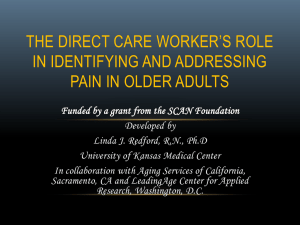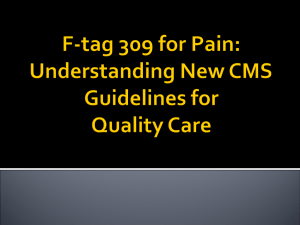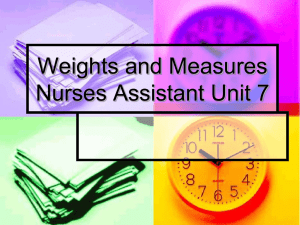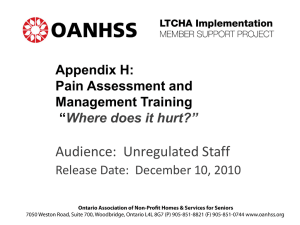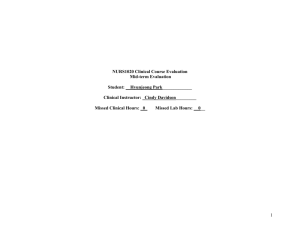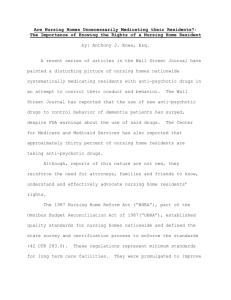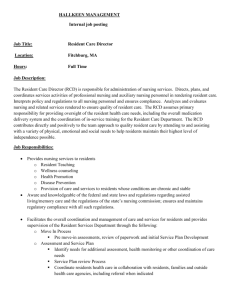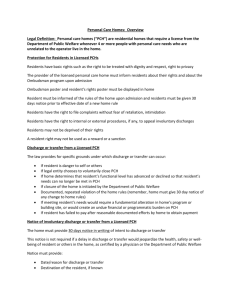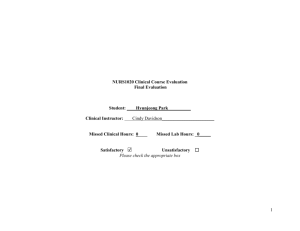Danger to Others
advertisement
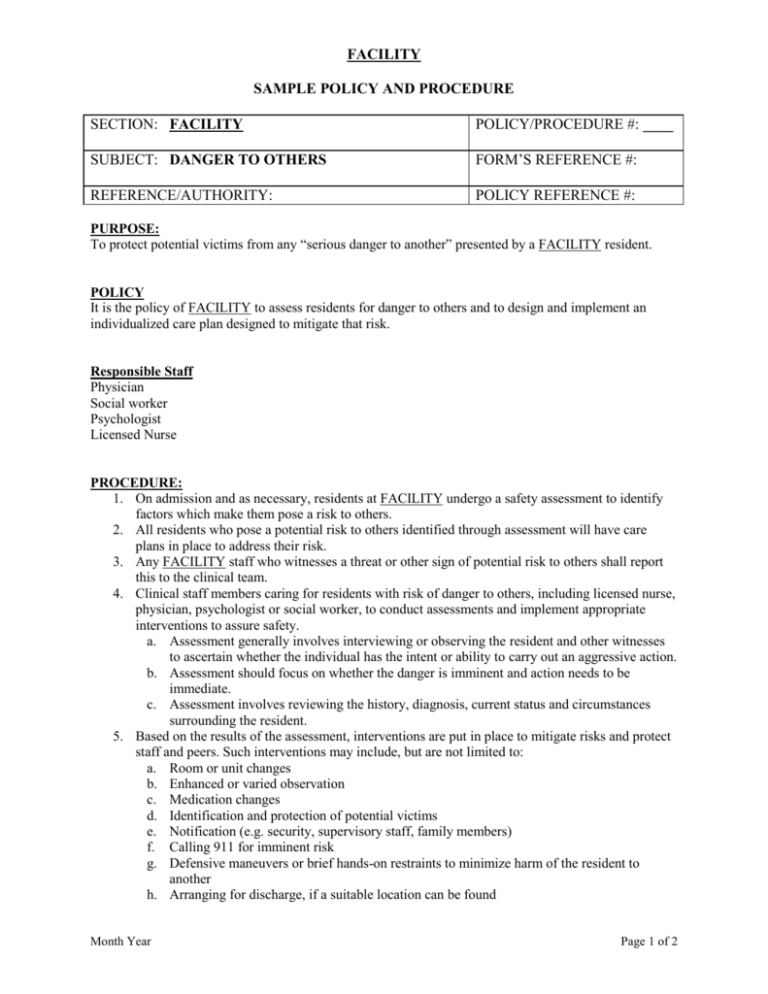
FACILITY SAMPLE POLICY AND PROCEDURE SECTION: FACILITY POLICY/PROCEDURE #: ____ SUBJECT: DANGER TO OTHERS FORM’S REFERENCE #: REFERENCE/AUTHORITY: POLICY REFERENCE #: PURPOSE: To protect potential victims from any “serious danger to another” presented by a FACILITY resident. POLICY It is the policy of FACILITY to assess residents for danger to others and to design and implement an individualized care plan designed to mitigate that risk. Responsible Staff Physician Social worker Psychologist Licensed Nurse PROCEDURE: 1. On admission and as necessary, residents at FACILITY undergo a safety assessment to identify factors which make them pose a risk to others. 2. All residents who pose a potential risk to others identified through assessment will have care plans in place to address their risk. 3. Any FACILITY staff who witnesses a threat or other sign of potential risk to others shall report this to the clinical team. 4. Clinical staff members caring for residents with risk of danger to others, including licensed nurse, physician, psychologist or social worker, to conduct assessments and implement appropriate interventions to assure safety. a. Assessment generally involves interviewing or observing the resident and other witnesses to ascertain whether the individual has the intent or ability to carry out an aggressive action. b. Assessment should focus on whether the danger is imminent and action needs to be immediate. c. Assessment involves reviewing the history, diagnosis, current status and circumstances surrounding the resident. 5. Based on the results of the assessment, interventions are put in place to mitigate risks and protect staff and peers. Such interventions may include, but are not limited to: a. Room or unit changes b. Enhanced or varied observation c. Medication changes d. Identification and protection of potential victims e. Notification (e.g. security, supervisory staff, family members) f. Calling 911 for imminent risk g. Defensive maneuvers or brief hands-on restraints to minimize harm of the resident to another h. Arranging for discharge, if a suitable location can be found Month Year Page 1 of 2 FACILITY SAMPLE POLICY AND PROCEDURE i. Nonpharmacological interventions such as distraction, redirection j. Consistent staffing k. Development of a behavioral management plan l. Outside referral (urgent or routine) m. Personal alarms 6. Documentation a. Nursing staff complete a new “safety assessment” on avatar and document their findings and conclusions in the progress notes. b. Other clinical staff will document their assessment and recommendations in the progress notes. c. Physicians will write appropriate orders, as indicated. d. Nursing staff will update care plan goals, contributing factors, and interventions. e. Dangerousness and interventions to reduce risk are documented on the C.N.A. assignment. 7. Training a. All staff receives specialized training in dementia and managing behaviors as well as defensive strategies to use in aggressive situations. Staff who is uncomfortable caring for residents with aggressive behaviors should inform their supervisor and receive further instruction or different assignments. b. Staff receives annual abuse training and reports all instances of resident harm to another resident as abuse per facility policy. 8. Special circumstances for some clinical staff When a person who is aware of the risk presented by one resident to another is defined as a psychotherapist under Evidence Code §1010* you should follow the above procedure. This includes, but is not limited to: A. Psychiatrists B. Licensed Psychologists C. Licensed Clinical Social Workers D. Licensed Marriage, Family, and Child Counselors E. Supervised assistants, interns, trainees, and students engaged in clinical work F. Registered Nurses who possess a master’s degree in Psychiatric Mental Health nursing *Note: If you are unsure whether or not you are considered a psychotherapist, consult with your supervisor. Month Year Page 2 of 2



